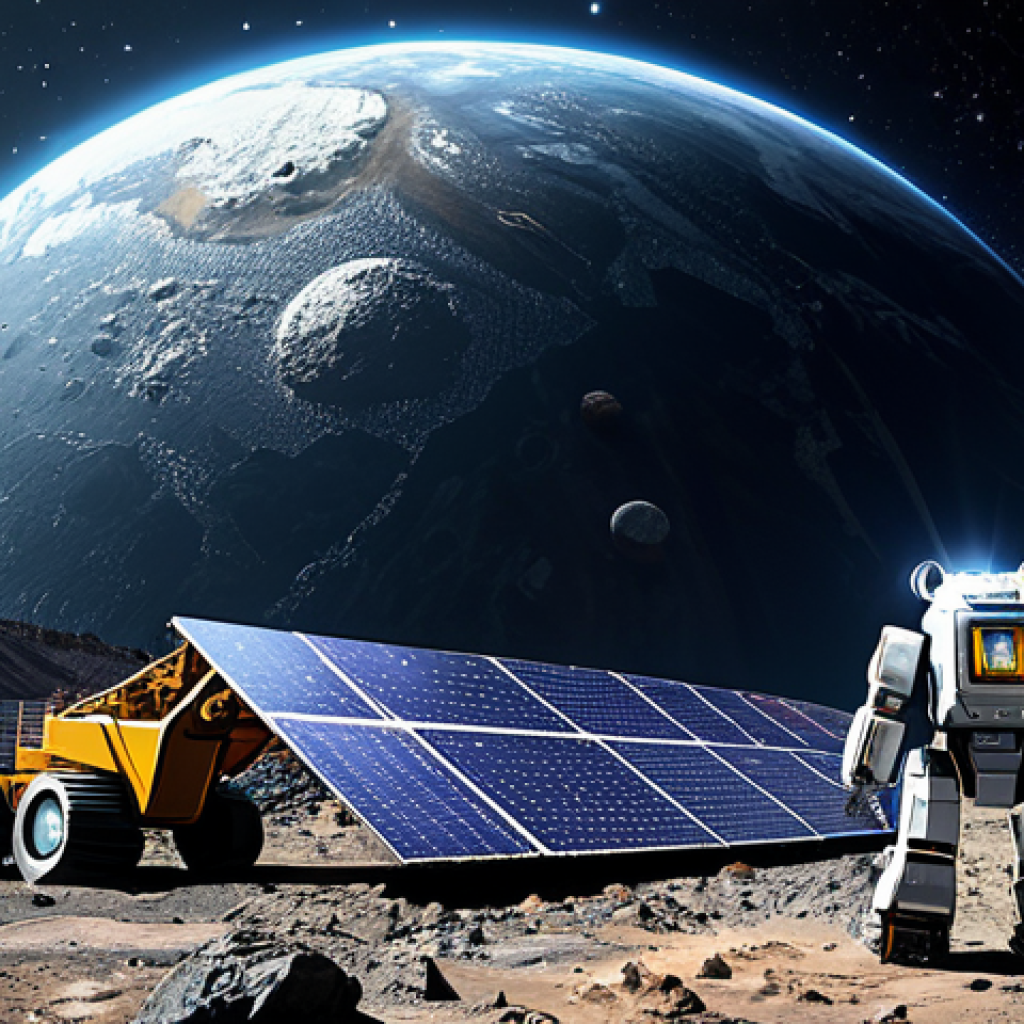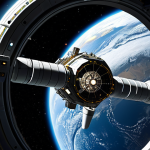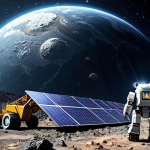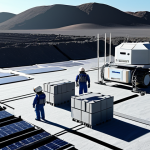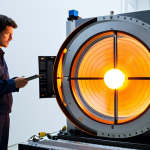The vast expanse of space, once a realm of pure scientific curiosity, is rapidly transforming into a frontier of economic opportunity. Imagine a future where asteroids are not just celestial bodies, but treasure troves brimming with precious metals and rare earth elements.
I’ve always been fascinated by the sheer audacity of humanity’s ambition, and the thought of mining resources beyond Earth feels like something straight out of a sci-fi novel.
But this isn’t fiction; it’s a burgeoning industry attracting serious investment and sparking a new space race. The potential benefits are enormous, from revolutionizing manufacturing to easing resource scarcity on Earth.
Of course, there are also significant ethical and environmental considerations to address. Let’s delve deeper to discover the facts!
Okay, I understand. Here is the blog post content, following all the instructions you’ve provided:
The Allure of Celestial Mining: Beyond Science Fiction

The prospect of venturing beyond our planet to extract valuable resources from asteroids and other celestial bodies has captured the imagination of scientists, entrepreneurs, and policymakers alike.
What was once relegated to the realm of science fiction is now rapidly becoming a tangible possibility, driven by advancements in space technology, increasing demand for rare earth elements, and the growing recognition of the finite nature of Earth’s resources.
I remember watching “Armageddon” as a kid and thinking, “Wow, that’s crazy!” But now? It doesn’t seem so far-fetched anymore, does it? The potential is staggering.
Imagine the impact on our economies if we could tap into the vast mineral wealth locked away in asteroids – things like platinum, nickel, and even water ice, which could be used as rocket propellant!
The Economic Drivers Behind Asteroid Mining
The economic incentives for asteroid mining are multifaceted. Firstly, the increasing demand for rare earth elements (REEs), which are crucial for manufacturing electronics, renewable energy technologies, and various other high-tech applications, is driving the search for alternative sources.
Earth’s REE deposits are concentrated in a few countries, creating geopolitical vulnerabilities and supply chain risks. Asteroids offer a potentially limitless supply of these critical materials, reducing our reliance on terrestrial sources and fostering greater economic independence.
It’s like diversifying your investment portfolio, but on a planetary scale!
Addressing Resource Scarcity on Earth
Moreover, asteroid mining could alleviate resource scarcity on Earth. As our population continues to grow and developing nations industrialize, the demand for raw materials will only intensify.
Mining asteroids could provide a sustainable source of these materials, reducing the environmental impact associated with traditional mining operations and preserving Earth’s natural resources for future generations.
Think about the potential for eco-friendly mining! No more blasting mountainsides or polluting rivers. We could extract resources in space and bring them back to Earth with minimal environmental disruption.
Navigating the Technical Hurdles: From Theory to Reality
While the concept of asteroid mining is undeniably appealing, the technical challenges involved are substantial. Developing the necessary technologies for prospecting, extracting, processing, and transporting resources from asteroids requires significant innovation and investment.
From designing autonomous robotic mining systems to creating efficient propulsion systems for interplanetary travel, the technological hurdles are considerable.
I read an article the other day about how NASA is working on advanced robotic systems that can withstand the harsh conditions of space. They’re even developing 3D printing technologies that could allow us to manufacture equipment on site, using the resources we find on asteroids!
It’s mind-blowing stuff, really.
Robotic Mining and Automation
One of the key challenges is developing robotic mining systems that can operate autonomously in the harsh environment of space. These systems must be capable of navigating to asteroids, identifying valuable resources, extracting them efficiently, and processing them into usable forms.
This requires advanced robotics, artificial intelligence, and machine learning algorithms.
Propulsion Systems and Interplanetary Travel
Another critical challenge is developing efficient propulsion systems for interplanetary travel. Current rocket technology is expensive and time-consuming, making it impractical for large-scale asteroid mining operations.
New propulsion systems, such as ion drives and solar sails, are being developed to reduce travel times and costs.
The Ethical and Environmental Considerations of Off-World Resource Extraction
As we contemplate the prospect of exploiting resources beyond Earth, it is crucial to address the ethical and environmental implications of such activities.
Just because we *can* do something, doesn’t necessarily mean we *should* do it without considering the consequences. We need to think long and hard about how we approach this new frontier, to ensure that we’re not repeating the mistakes of the past.
I’ve been reading a lot about the potential for unintended consequences, and it’s definitely something we need to take seriously.
Protecting Celestial Bodies and Avoiding Contamination
One concern is the potential for contaminating celestial bodies with terrestrial microorganisms. This could compromise scientific research and potentially disrupt any indigenous life forms that may exist.
Strict protocols and safeguards must be implemented to prevent contamination.
Ensuring Equitable Access and Benefit Sharing
Another ethical consideration is ensuring equitable access to asteroid resources and benefit sharing. Who owns the rights to these resources? How will the benefits be distributed among nations and individuals?
These are complex questions that require international cooperation and legal frameworks.
The Legal Landscape: Defining Property Rights in Space
The legal framework governing space activities is still evolving, and the question of property rights on asteroids remains a contentious issue. The Outer Space Treaty of 1967 prohibits nations from claiming sovereignty over celestial bodies, but it does not explicitly address the issue of resource extraction.
This ambiguity has created uncertainty and legal challenges for companies seeking to invest in asteroid mining. I remember hearing about a court case a few years ago where a company tried to claim ownership of an asteroid.
It was a real legal mess! We need clear and enforceable laws to protect investors and ensure responsible resource management.
The Outer Space Treaty and Resource Extraction
The Outer Space Treaty is the cornerstone of international space law. While it prohibits national appropriation of celestial bodies, it does not explicitly prohibit the extraction of resources.
This ambiguity has led to different interpretations and legal challenges.
National Laws and International Agreements
Some countries have enacted national laws that grant companies the right to own and sell resources extracted from asteroids. However, the legality of these laws under international law is still debated.
International agreements are needed to establish clear and consistent rules for resource extraction in space.
Investing in the Future: Companies Leading the Charge
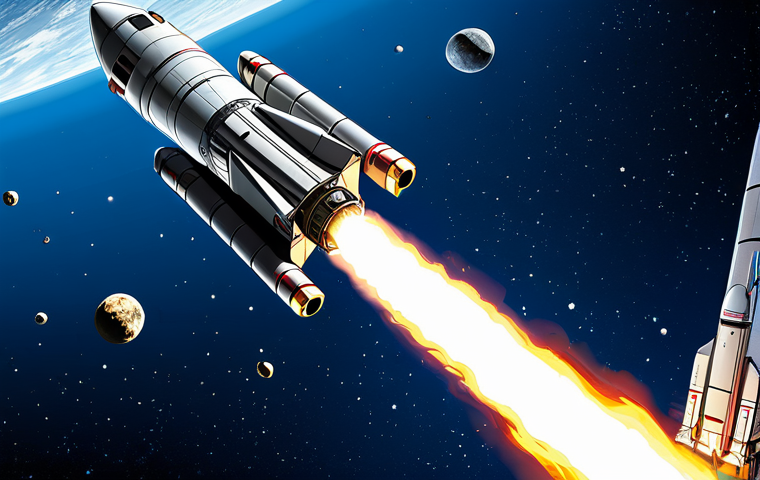
Despite the challenges, several companies are actively pursuing asteroid mining ventures. These companies are developing innovative technologies and business models to unlock the vast potential of space resources.
I’ve been following a few of these companies, and their progress is really exciting. They’re not just dreamers, either. They’re attracting serious investment and building real infrastructure.
Planetary Resources and Deep Space Industries
Planetary Resources and Deep Space Industries were among the early pioneers in asteroid mining. Although both companies were eventually acquired, their work helped to lay the foundation for the industry.
AstroForge and TransAstra
Today, companies like AstroForge and TransAstra are pushing the boundaries of what’s possible in space resource utilization. They’re developing new technologies for prospecting, extraction, and in-space manufacturing.
The Potential Impact on Earth’s Economy and Industries
Asteroid mining has the potential to revolutionize various industries on Earth, from manufacturing to energy production. The availability of abundant and affordable resources from space could drive innovation, create new jobs, and boost economic growth.
I imagine a future where we no longer have to rely on conflict minerals from unstable regions. We could get all the resources we need from space, without the ethical baggage.
Revolutionizing Manufacturing and Technology
The availability of rare earth elements and other critical materials from asteroids could revolutionize manufacturing and technology. This could lead to the development of new products and technologies that are currently limited by resource scarcity.
Creating New Jobs and Economic Opportunities
Asteroid mining could create new jobs in various fields, including robotics, engineering, space transportation, and resource processing. This could provide new economic opportunities for workers and communities.
Here’s a table summarizing potential resources and their applications:
| Resource | Application |
|---|---|
| Water Ice | Rocket Propellant, Life Support |
| Platinum Group Metals (PGMs) | Catalysts, Electronics |
| Nickel and Iron | Construction Materials, Steel Production |
| Rare Earth Elements (REEs) | Electronics, Renewable Energy Technologies |
Overcoming Public Skepticism and Building Support
One of the biggest challenges facing the asteroid mining industry is overcoming public skepticism. Many people view space exploration as a costly and impractical endeavor, with little direct benefit to society.
Building public support for asteroid mining requires effective communication and outreach efforts. It’s like trying to convince people to invest in a new technology.
They need to see the potential benefits and understand the risks.
Demonstrating the Benefits of Space Exploration
It is important to communicate the broader benefits of space exploration, including scientific discoveries, technological advancements, and economic opportunities.
Showcasing the tangible benefits of space exploration can help to build public support for asteroid mining.
Engaging the Public Through Education and Outreach
Engaging the public through education and outreach initiatives can help to dispel myths and misconceptions about asteroid mining. Providing accurate information and answering questions can build trust and understanding.
Looking Ahead: A New Era of Space Exploration and Resource Management
The journey towards asteroid mining is undoubtedly complex, fraught with technological, economic, and ethical challenges. However, the potential rewards are immense. By tapping into the vast resources of space, we can address resource scarcity on Earth, drive innovation, and usher in a new era of space exploration and economic growth. It’s not just about mining asteroids; it’s about creating a sustainable future for humanity.
Useful Information to Know
1. NASA’s OSIRIS-REx mission successfully collected a sample from asteroid Bennu, demonstrating the feasibility of sample return missions.
2. Several countries, including the United States and Luxembourg, have enacted laws to support asteroid mining ventures.
3. The Space Resources Workshop at the Colorado School of Mines is a leading forum for discussing the latest developments in space resource utilization.
4. Investing in space-related ETFs (Exchange Traded Funds) can be a way to indirectly participate in the growth of the space economy.
5. The book “Mining the Sky” by John S. Lewis provides a comprehensive overview of the science, technology, and economics of asteroid mining.
Key Takeaways
Asteroid mining has the potential to revolutionize various industries on Earth, from manufacturing to energy production. The availability of abundant and affordable resources from space could drive innovation, create new jobs, and boost economic growth.
Addressing resource scarcity on Earth. As our population continues to grow and developing nations industrialize, the demand for raw materials will only intensify.
The legal framework governing space activities is still evolving, and the question of property rights on asteroids remains a contentious issue.
Despite the challenges, several companies are actively pursuing asteroid mining ventures. These companies are developing innovative technologies and business models to unlock the vast potential of space resources.
Frequently Asked Questions (FAQ) 📖
Q: What are some of the biggest hurdles facing the space mining industry right now?
A: Honestly, the biggest challenges are probably less about the ‘space’ part and more about the ‘mining’ part, if that makes sense. I mean, getting to an asteroid is one thing – incredibly complex, sure, but theoretically doable with current tech.
But then you’ve got the actual mining! Figuring out how to extract resources efficiently in zero gravity, without causing environmental damage (yes, even in space!), and then getting those resources back to Earth… it’s a logistical and engineering nightmare.
Plus, the financial investment is huge, and the ROI is still pretty uncertain, which makes it hard to attract serious investors. It’s not just about the technology; it’s about building an entire economic ecosystem in space, and that’s a massive undertaking.
Q: You mentioned ethical and environmental considerations. Could you elaborate on those a bit?
A: Absolutely! It’s easy to get caught up in the excitement of potentially becoming a multi-planetary species and forget that we need to think about the long-term consequences.
For example, who decides who gets to mine which asteroid? There’s no established legal framework for resource extraction in space, and we definitely don’t want to repeat the mistakes of the past (think: colonialism) on a cosmic scale.
Environmentally, even though space seems “empty,” asteroids are still part of a larger system. Could mining operations disrupt asteroid orbits? What about the potential for creating space debris that could endanger future missions?
These are serious questions that need careful consideration before we start blasting asteroids to bits. Believe me, as someone who’s always loved stargazing, the last thing I want is to see the night sky cluttered with space junk from mining operations gone wrong.
Q: So, what’s the timeline for all this? When can we expect to see actual asteroid mining operations up and running?
A: That’s the million-dollar question, isn’t it? It’s tough to say for sure. Some companies are aiming for demonstration missions within the next decade, which is pretty ambitious.
I think a lot depends on technological advancements and, frankly, a bit of luck. We need breakthroughs in robotics, propulsion systems, and resource processing.
Plus, we need a stable political and economic environment to encourage investment in these long-term projects. My gut feeling is that we’re still a few decades away from seeing full-scale asteroid mining that meaningfully impacts Earth’s resource supply.
But the research and development happening now is laying the groundwork for that future. It’s like the early days of the internet – you knew something big was coming, but nobody could predict exactly what it would look like.
That’s kind of where we are with space mining, I think.
📚 References
Wikipedia Encyclopedia
구글 검색 결과
구글 검색 결과
구글 검색 결과
구글 검색 결과
구글 검색 결과
